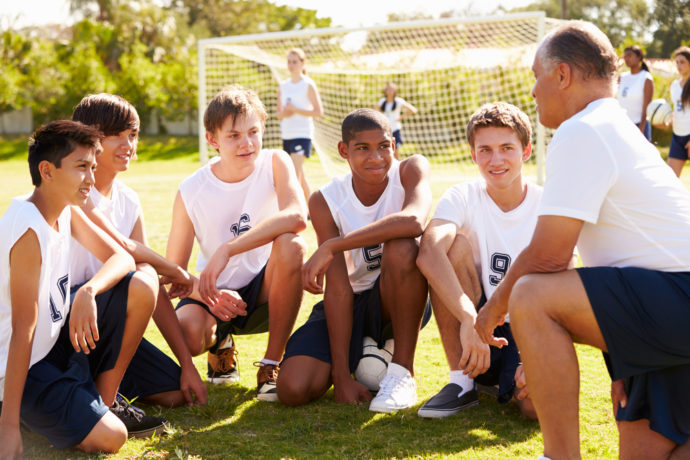During last year’s NFL season, the nation watched as Buffalo Bills safety Damar Hamlin went down on the field after a big hit to the chest. The sports medicine team, and specifically its athletic trainers, jumped into action and saved his life on the field.
Sports motivate students to achieve extraordinary success. And with sports participation comes the risk of acute or catastrophic injury. Every second counts when an athlete goes down on the field.
Sudden cardiac arrest is the most common cause of death in young athletes. While rare, it is often catastrophic if there is no trained staff on the field, the right lifesaving equipment and a well-documented injury action plan.
The Importance of Athletic Trainers at Youth Sporting Events
As a parent of three children and an athletic trainer for over 20 years, I understand the importance of keeping our student athletes safe when participating in sports.
Every sports team, from professional to youth levels of play, should have an athletic trainer on the sideline to prevent, diagnose, treat and rehab injuries or sport-related illnesses should they occur. Their evaluation of injury and referrals to other medical professionals is critical. Research shows a 55% injury reduction when prevention programs are implemented. Yet only 37% of US high schools have a fulltime athletic trainer.
Parents play a vital role in advocating for their student athlete. Whether they are on the field, stage or warehouse floor—your child’s team deserves an athletic trainer to help keep your community healthy, safe and thriving in all sports.
Here are questions from the National Athletic Trainers’ Association (NATA) that you should ask your school to help ensure they are keeping all student athletes safe:
How is the School Caring for My Student Athlete Child?
Find out what steps are in place to keep young athletes safe. The lifesaving actions that saved Damar Hamlin’s life reinforce the importance of having an Emergency Action Plan (EAP). Every team should have a venue-specific written EAP to manage acute or serious injuries. Ask if your school has one.
When Is the School Providing Sports Medicine Care?
It is important that you also know when the athletic trainer is available. Many schools only have athletic trainers available for competitions. Most serious and life-threatening injuries or conditions occur during practice or off-season.
Athletic trainers should be available not just on gamedays but during pre- and regular- season practices too. That includes both mandatory and voluntary workouts.
Does the school have an AED and someone who knows how to use it?
AEDs can save a life if a sudden cardiac arrest occurs when every second count. Ensure that the sports medicine team and other personnel know where they are located and how to use them.
Does the school have lightning protocols?
Schools should have a lightning-specific emergency action plan in place that ensures lightning and general weather awareness.
Does the school have a concussion protocol?
Student athletes take hard falls and hits, often bumping their head. If a concussion is suspected, what is their protocol, both on the field when the concussion occurred and when they return to play? It should be clearly outlined how long a student athlete should remain on the sidelines after a head injury. The coaches and athletic training staff should also be well versed in concussion prevention.
Helping Student Athletes Stay Safe
Before your student athlete takes the field, here are things you can do to help keep your student safe.
- Get Cardiopulmonary Resuscitation (CPR) Training. CPR is an emergency lifesaving procedure performed when the heart stops beating. According to the American Heart Association, immediate CPR can double or triple chances of survival after cardiac arrest. It’s not only important for parents to know CPR, but middle and high school students can be trained in CPR as well.
- Beat the heat. If training or games happen during hot weather months, be sure to acclimatize your student to exercising outside over a seven to 14-day period.
- Stay hydrated. Drinking plenty of fluids like water and drinks containing electrolytes can help students avoid injuries. Be sure they aren’t drinking caffeinated/energy drinks. Those can disrupt a student’s normal heart rhythm.
From the school to the staff to the parents, we all play a role in keeping student athletes safe from injury. Find more information on reducing the risk of sports injuries at AtYourOwnRisk.org.
Scott Galloway is a board member of the National Athletic Trainers’ Association and serves as director of athletics in the White Settlement Independent School District in Texas.





